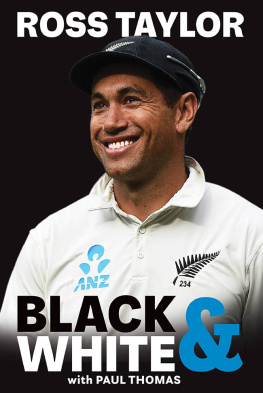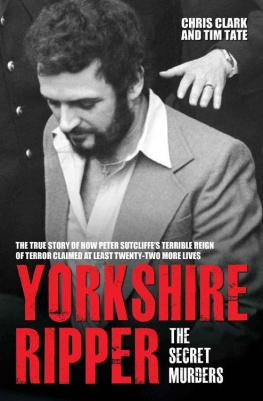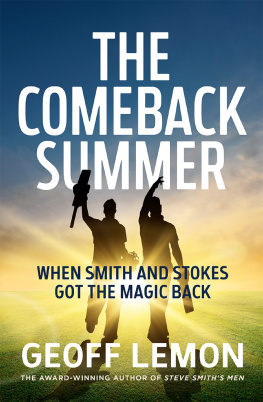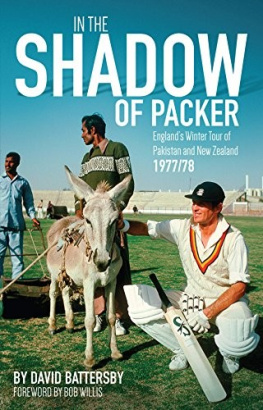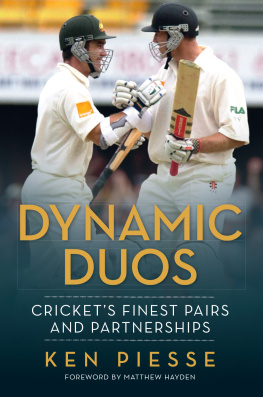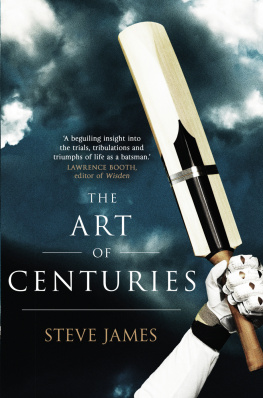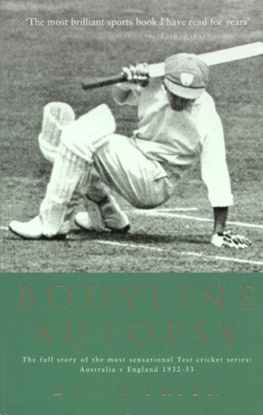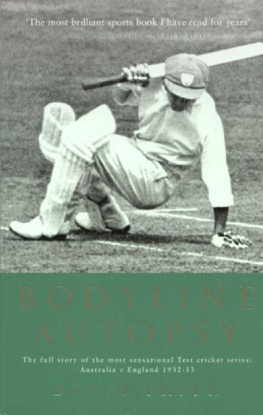T his book was the result of a collision of souls. It wouldnt have been possible but for the generosity of the many people who took time to contribute, none more so than the late Rod Nye, who was cruelly taken from us at a point when hed almost completed his research on Sutcliffe, and was about to write the first chapter. Likewise, nothing can convey the respect felt for his dear widow Vivienne, who somehow summoned the courage to turn his lifes work over to a complete stranger in order that the achievements of a New Zealand champion could be properly celebrated. If medals of valour were to be handed out, she would be the first decorated.
It is a measure of the goodwill Sutcliffe engendered that so many were prepared to play a part in this publication. Some names will undoubtedly be missing here, but rest assured no slight is intended. The author and publisher wish to formally salute: Sutcliffes family, from brother Mervyn, to son Gary and daughters Christine and Lynn for their ongoing support, and for the access to Berts personal scrapbooks and memorabilia, not least the wonderful, carefully captioned photograph album featuring snaps from the 1949 tour. Also, Takapuna Grammar School for the stream of archival information that helped recreate Sutcliffes phenomenal schoolboy record.
Wellington international umpire and cricket statistician Evan Watkin, who volunteered to crunch and check the numbers, and then went beyond the call of duty to research names and overseas records while proving himself one of the best closet sub-editors in the business. Sutcliffes old friend and Otago ally, former New Zealand Cricket president and broadcaster Iain Gallaway, who was a constant inspiration, not only proof-reading the manuscript for historical context but revealing a keen eye for the split infinitive. The great Australian all-rounder Alan Davidson, who didnt even know he was writing the foreword but supplied a tribute so fitting and gracious that it was too good to pass up.
The Otago Cricket Association, and in particular its chief executive Ross Dykes, for access to photographs and scrapbooks, and for its general enthusiasm for the project. The New Zealand Herald for permission to reproduce selected extracts, Dunedins Otago Daily Times newspaper for use of its resources, and Fairfax Media for the use of the cover photograph.
Author Wesley Harte and the Association of Cricket Statisticians and Historians, for permission to use the comprehensive statistical review contained in their publication, Famous Cricketers SeriesNo.23, Bert Sutcliffe. The web address and contact details of the ACS are included at the end of the book.
Sutcliffe himself, for his candid interviews before passing away, and also his permission to call on accounts contained in his autobiography, Between Overs, published by W H Allen & Co in 1963. David Higham Associates for permission to use a verse from the Herbert and Eleanor Farjeon poem The Game Thats Never Done and, finally, all those who were interviewed or provided information for the project.
A s a schoolboy in 1946, with a keen ambition to play for Australia, I took great interest in the first MCC (Marylebone Cricket Club) tour Down Under since the end of the Second World War. The return of Don Bradman and my heroes Ray Lindwall, Keith Miller, Don Tallon, Arthur Morris and Colin McCool was a magnet for all cricket enthusiasts, particularly young fans such as myself.
Naturally, after the tour ended we all closely followed the fortunes of the MCC in New Zealand, which is how most Australians at the time became familiar with the name of Bert Sutcliffe. Wed heard of the great English Test batsman Herbert Sutcliffe, of course, but with scores of 197 and 128 for Otago against the MCC, Bert performed a feat previously achieved only by Arthur Morris in Adelaide a month or so earlier.
Then, in 1949, Berts prolific run-scoring deeds and aggregate on the tour to England (at the time second only to Bradman) marked him out as one of the worlds very special batsmen; a name to be remembered. A couple of months later I made my own first-class debut and after just three games for New South Wales, I was selected to tour New Zealand with Bill Browns Australians, confirming in my mind that miracles sometimes really do happen.
I didnt play in the Otago game but a week later, in the unofficial Test, opened the bowling against Bert without any success, although I did help to dismiss him on 42 diving to take a catch at mid-wicket off the bowling of leg-spinner Doug Ring.
My first impressions of Bert? He had a superb stance; his driving and placement on the offside was extremely good but, most of all, everything he did was effortless. He was a stylist of the highest calibre. How lucky I felt when, off the first ball of the second innings, he edged a catch to Tallon.
Some 12 years or so later I was invited over to Masterton with Morris to play in an invitation eleven (that included Bert) against the then-returning New Zealand touring team. I recall Dick Motz and Frank Cameron taking a heavy toll on our early batsman, and the quick but typical conversation I had with Bert when I joined him at the wicket. Lets get into em, was his opening remark. And so he did. The next hour brought a century partnership, of which Bert contributed about 70 of the runs; a dazzling exhibition, comprising shots off the back and front foot that were possible for only batsmen of the highest, dare I say it, genius, class. That innings, at the age of 40, prompted immediate comparisons with my compatriot Neil Harvey, at the time considered by many to have been the best left-handed batsman in the world.
It was no surprise therefore when, in 1965 at the age of 41, Bert came out of retirement to tour India and England and scored his fifth Test century: an astonishing 151 not out at Calcuttas Eden Gardens. No surprise, I mean, because he was simply that good. For sheer mastery, and the ability to make good bowling look ordinary, there were few better sights than watching Bert Sutcliffe bat unless, of course, you were an opposition bowler.
From the mid 1960s on, my life usually featured an annual holiday to Christchurch and, inevitably, an invitation to help coach Canterbury junior players under the guidance of Walter Hadlee. On those occasions Bert was often a fellow coach and his quiet, modest manner and patience were both an indication of his quality, and an excellent example for the local, emerging players of the time.
A combined match against the juniors once had Graham Dowling, Gary Bartlett, Vic Pollard, Bert and myself in the side, along with a keen young player named Richard Hadlee. When Richard arrived to bat I remember Bert pleading to be brought on to bowl.
Whats your poison? I asked. Chinamen, he replied, so I tossed him the ball. Outcome? R J Hadlee: stumped for 0.
Throughout the 1970s and 1980s, Berts position with the New Zealand Rothmans Sports Foundation and my similar role with the Australian body saw us involved in many joint ventures. One of the Australian initiatives was to visit cities and venues and conduct coaching clinics in perhaps up to a dozen different sports. Not surprisingly, Bert was proficient at just about all of them.
Even when we once went to Cairns and Townsville, only to realise we hadnt catered adequately for the womens sport of vigoro (a cross between cricket and baseball), Bert was able to come to the rescue not only learning the basics himself in an instant, but then imparting them to all who attended. He was so popular he was given a special presentation at the end of the clinic, despite only discovering the game that week.
Another highlight for me was attending Berts This Is Your Life function held at the Ellerslie racecourse in Auckland. It was a moving occasion and an outstanding but deserved acknowledgement of a man who, I believe, was the greatest batsman New Zealand ever produced.


